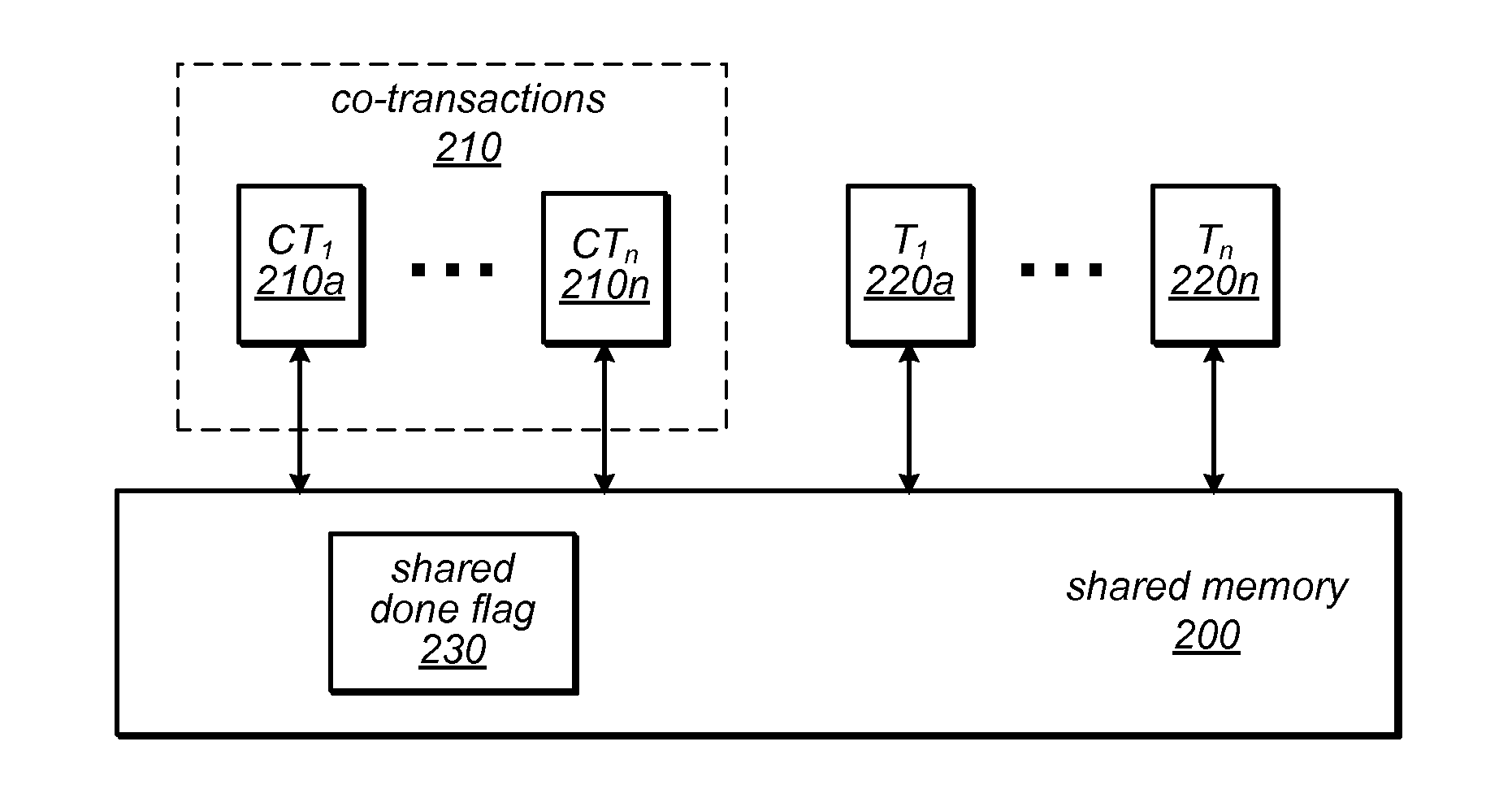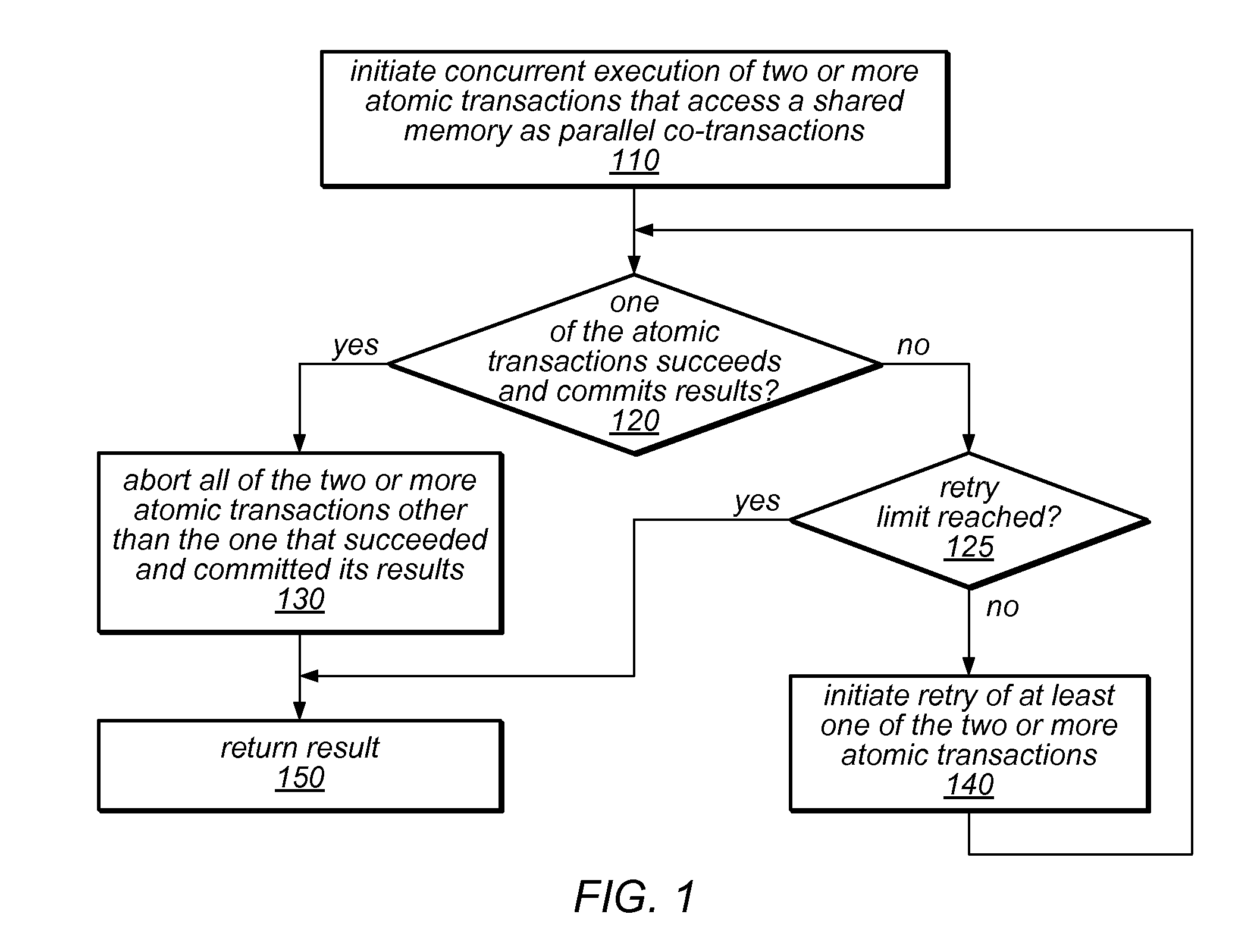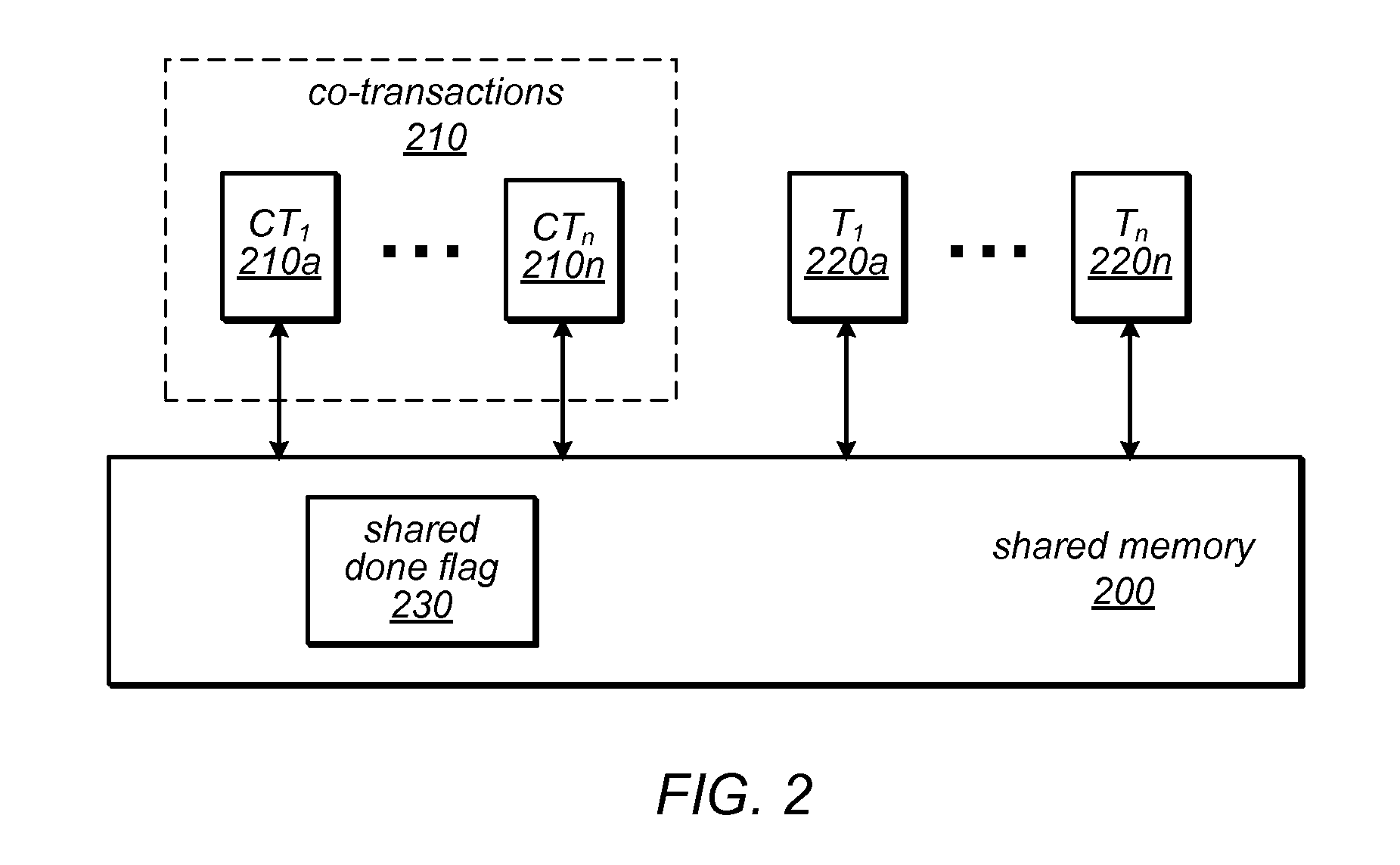System and Method for Executing a Transaction Using Parallel Co-Transactions
a technology of co-transaction and system, applied in the field of concurrent access to shared objects, can solve the problems of inability to ensure the correctness of interleaved execution, difficulty in managing the interactions of concurrent threads, and inability to execute concurrent executions, so as to minimize the potential for failures and simplify and efficient implementations
- Summary
- Abstract
- Description
- Claims
- Application Information
AI Technical Summary
Benefits of technology
Problems solved by technology
Method used
Image
Examples
Embodiment Construction
[0021]As used herein, the term transaction may refer to a series of program instructions that may be executed together as an atomic operation. As described above, if the transaction succeeds (i.e. is successfully committed), then any resulting changes to shared memory may become visible to entities other than the actor. If a transaction does not succeed (i.e. is aborted), then the transaction attempt will have caused no change to any shared memory location. In other words, a transaction is a section of code that either appears to execute all at once (so that it does not observe concurrent changes by other threads, and so that other threads do not observe partial execution of the transaction), or to not execute at all. Read validation is a process by which software transactions check for consistency of the data with which they are executing, i.e. consistency between data read from a shared memory during execution of a given transaction. In various embodiments, different read validati...
PUM
 Login to View More
Login to View More Abstract
Description
Claims
Application Information
 Login to View More
Login to View More - R&D
- Intellectual Property
- Life Sciences
- Materials
- Tech Scout
- Unparalleled Data Quality
- Higher Quality Content
- 60% Fewer Hallucinations
Browse by: Latest US Patents, China's latest patents, Technical Efficacy Thesaurus, Application Domain, Technology Topic, Popular Technical Reports.
© 2025 PatSnap. All rights reserved.Legal|Privacy policy|Modern Slavery Act Transparency Statement|Sitemap|About US| Contact US: help@patsnap.com



